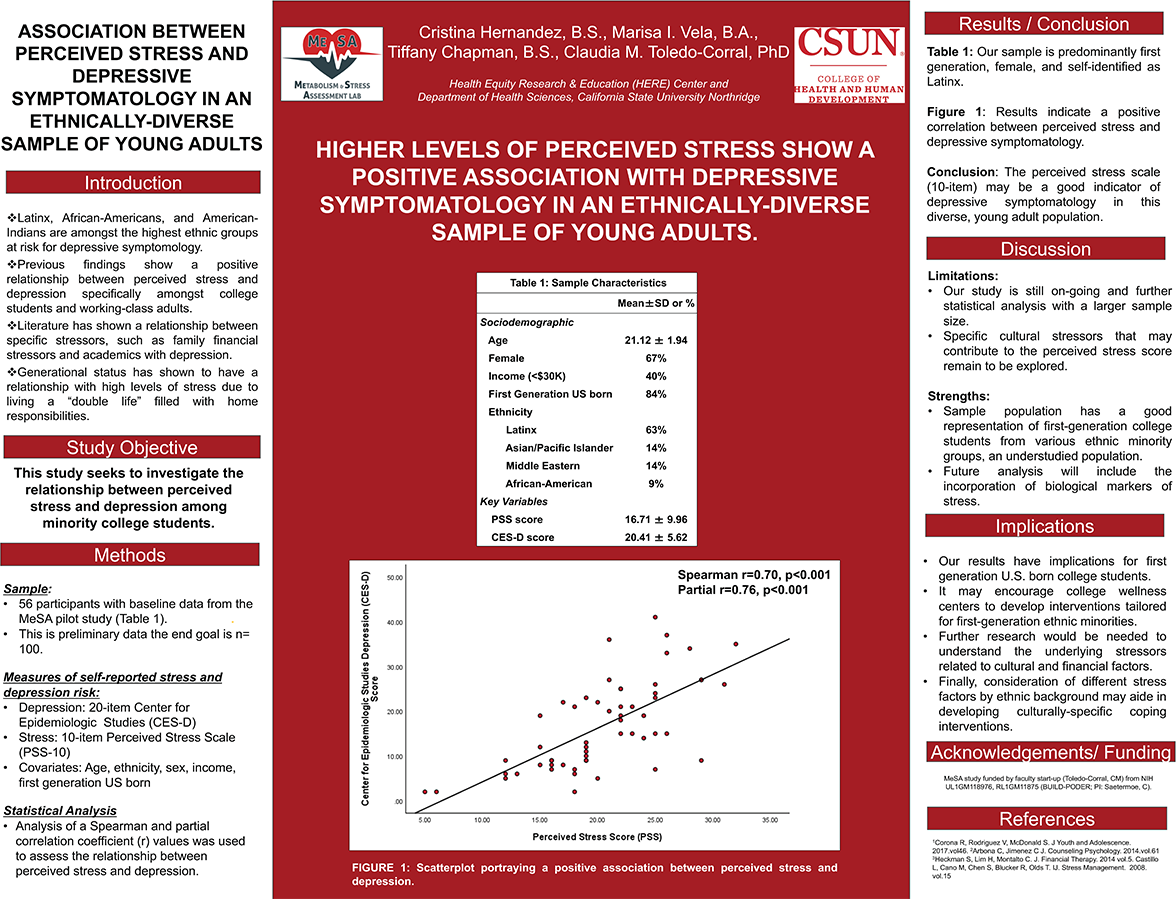Cristina Hernandez, B.S., Marisa I. Vela, B.A., Tiffany M. Chapman, B.S., Claudia M. Toledo-Corral, PHD, Health Sciences, California State University, Northridge, Northridge, CA
Background: Depression effects more ethnic minorities in comparison to other ethnic groups, Latino/as, African-Americans, and American Indians are amongst the highest ethnic groups at risk for depressive symptomatology. There is also a positive relationship between perceived stress and depression specifically amongst college students and working-class adults. This study seeks to investigate the relationship between perceived stress and depression among college students. Based on the literature, we hypothesize that higher levels of perceived stress will be associated with higher depressive symptomatology.
Methods: The Metabolism and Stress Assessment (MESA) lab seeks to understand various stressors among the young adult population of California State University, Northridge (CSUN). The study has a current sample of 24 participants with an N goal of 100, mean age 21.4 years old (SD=1.8). Of the 24 participants, 56.5% are Hispanic or Latino/a, 66.7% reported as female. The 10-item Perceived Stress Scale (PSS-10) and 20-item Center for Epidemiologic Studies-Depression (CES-D) scales were used to assess self-reported perceived stress and depression risk. A Pearsonʼs correlation coefficient (r) value was computed to assess the relationship between perceived stress and depression.
Results: There was a positive correlation between perceived stress and depression amongst CSUN colleges students (r=0.664, n=24, p=0.001).
Conclusion: CSUN students who self-reported high levels of perceived stress also reported high levels of depressive-like symptoms. Further research with a larger sample size is needed to understand whether there is a differential effect of ethnicity/race or sex on the relationship between stress and depression.
*This poster was presented at The American Psychosomatic Society annual meeting. The sample size reflects that of March 2020.
